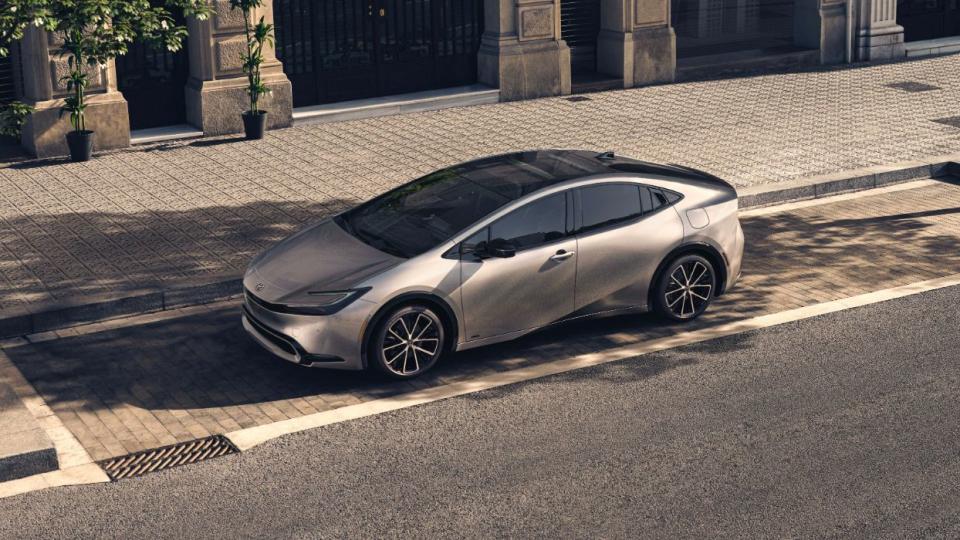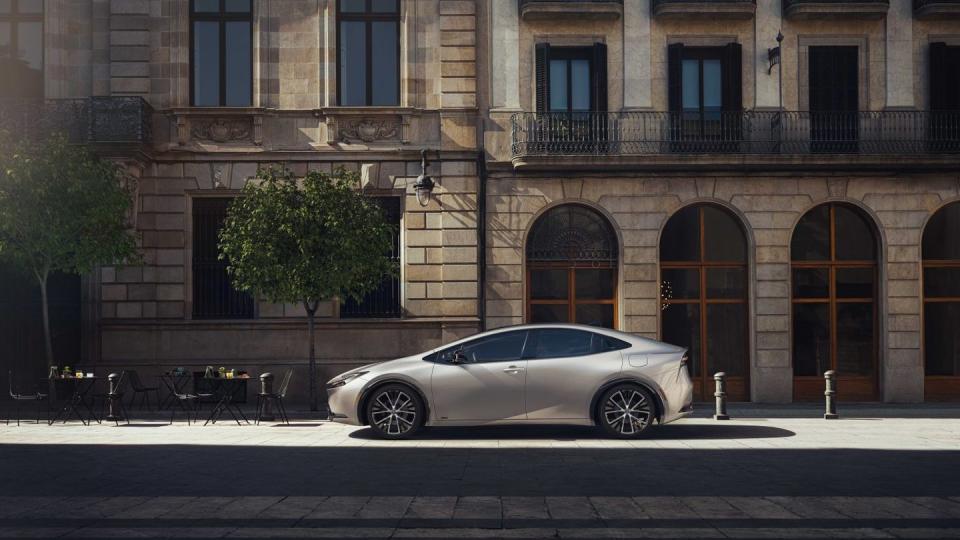Redesigned 2023 Toyota Prius Is Visually Stunning

The current Prius is an example of a vehicle with lots of “style,” but in the worst sense with its tortured sheet metal and frumpy proportions.
The Prius has been recognized for its leading hybrid technology and gas mileage, but the new version for 2023 makes the car aesthetically alluring for shoppers, too.
There are previous examples of vehicle redesigns that missed the mark, but Toyota deserves to succeed with its bold and gutsy design approach with the new Prius.
“Have you seen the new Prius?”
I knew something was up when I began to get the same message from several people. Toyota’s recent introduction of the 2023 Prius was causing a stir, and one needs only a quick glance to understand why. The car is stunning, and I don’t mean in the way the previous car was.
The current Prius is an example of a vehicle with lots of “style,” but in the worst sense with its tortured sheet metal, strange graphics, and frumpy proportions. The 2023 Prius is simply handsome, clean, sleek, and the best design statement Toyota has made since embracing “design.” It’s that good.
And it’s not difficult to understand what makes it so. Compared to the 2022 Prius, the new car is lower and wider, but the real story is in the profile. The windshield is much faster, with its touchdown further forward on the car.
The result is what appears to be one uninterrupted line from the top of the windshield through the front fender, something that mid-engine exotics aspire to (and they don’t have a front engine to package). This is unheard of on a four-door sedan.
And while a typical sedan has a three-box profile (hood, passenger compartment, and trunk), the new Prius appears as one, smooth, continuous form. In addition, for a car that consistently looked under-tired, the new Prius offers 19-inch wheels, and the dark wheel opening trim gives it a welcomed wheel-oriented character that reduces the prior car’s visual heaviness.
Lately, Toyota (and its Lexus luxury brand) has been reveling in some funky front-end designs, and some have adopted the current no-grille-is-too-big approach. The new Prius is refreshing in that its lower fascia opening appears to be, well, just a functional air intake.
Even the rear is restrained, with a simple horizontal taillamp theme and single backlight. It may not be as aesthetically arresting as the previous design, but in this case, that’s for the better.
Some concerns, though. The early press cars have only been shown with the 19-inch rims, while 17-inchers will be standard, and that will make a difference. Also, that fast windshield is partially enabled by an equally radical DLO (daylight opening, or side glass graphic) that begins its downward slope at the B-pillar, and one can’t help wondering about ingress and egress, especially for short and taller drivers.
What makes this introduction even more surprising is that the Prius is recognized for its leading hybrid technology and extraordinary gas mileage, not to mention Toyota’s typical reliability—it has always sold on these qualities and never on appearance.
The new car looks so different, it’s as if the program brief for it was given to another company to execute, with a different culture and set of priorities. One can only speculate what happened at Toyota, if the company felt it needed to cover its bets on its hybrids with the onslaught of new EVs.

Or, maybe this was a proposal from the Design department looking to really mix things up. Either way, this is not just a simple restyling of the Prius, but a repositioning of the product that may well appeal to buyers who never would have considered one before. Imagine, a pretty Prius.
This doesn’t happen very often. Typically, manufacturers evolve designs in a measured progression.
Looking for something that might be comparable, one could argue that the C8 Chevy Corvette is a radical departure from its predecessor (and some people just don’t like the new styling), but it’s on a new mid-engine platform that drove the new proportion. Besides, the former car still looks great.
Perhaps a better example would be the 1994 Dodge Ram, and you need only to look at the 1993 version to realize how much of a departure it was. A truck as a styling statement? No question, and after almost 30 years you can still see the DNA of that ’94 design in today’s Ram. (Truthfully, the ’94 Chrysler full-size cars went through a radical change as well, finally abandoning their “K-car” roots, and helped make Chrysler the domestic design leader at the time).
On the other hand, one can recall radical redesigns that didn’t work so well. Think of the 1974 Mustang II, a downsized Pinto-based, ill-proportioned shadow of the iconic original. Despite this, it sold well partially because of the fuel crises of the time.
Then there’s General Motors’ 1986 “E” bodies—the Buick Riviera, Oldsmobile Toronado, and Cadillac Eldorado and Seville. All these cars were once design leaders (and sold almost purely because of this), but starting in 1986 they were reduced to awkward, misguided replacements of these bold and striking vehicles. No longer visually compelling, sales dried up.

So, while great design alone is no guarantee of success—nor bad design a recipe for failure—I think Toyota deserves to succeed with its bold and gutsy design approach on the new Prius.
And if not, did I mention it gets 55 mpg?
Dave Rand (pictured above, right) is the former executive director of Global Advanced Design for General Motors.
How do you like the redesigned Toyota Prius? Please comment below.

 Yahoo Autos
Yahoo Autos 